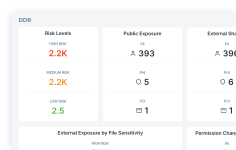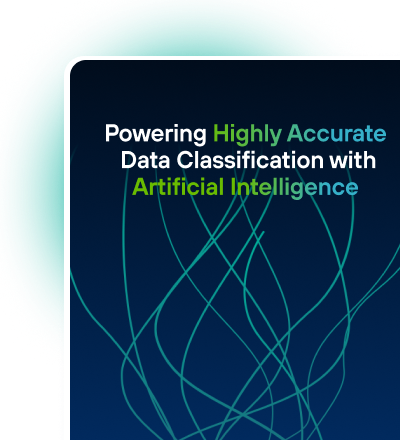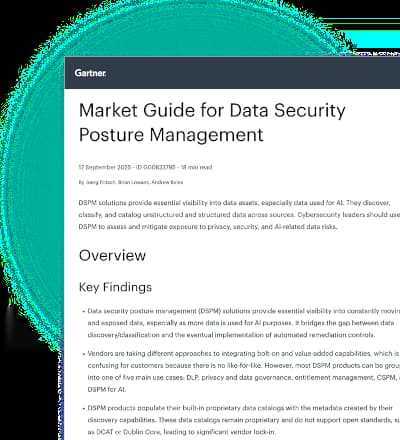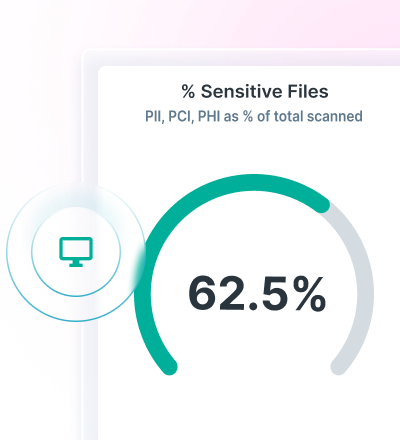Shadow AI Risks and How to Stop Them
0 Minuten Lesezeit

Shadow AI is the next evolution of insider risk that most security teams overlook. It happens when employees use potentially unapproved AI tools like ChatGPT, Copilot or Gemini, etc. to process business data. Unlike sanctioned platforms, these tools can capture and store sensitive inputs, creating invisible channels for data leakage, regulatory violations and compliance gaps.
Similar to Shadow IT, Shadow AI emerges when individuals or teams adopt AI on their own, for example: developers experimenting with code assistants, finance teams running forecasts or compliance officers analyzing contracts. Even with good intentions, these unsanctioned uses expose organizations to insider risks that traditional security controls fail to catch.
Why Shadow AI is Dangerous for Data Security
On the surface, Shadow AI may appear harmless: a developer tests code in an AI assistant, a finance analyst feeds financial data into a generative tool or a compliance officer analyzes documents. However, the underlying risks are significant and often invisible.
Many AI providers explicitly state in their privacy policies that they log and record user input to improve models. This means sensitive data submitted to these tools may be stored, reviewed or used for training, making it essential to control what employees and teams share externally. Beyond this logging risk, organizations must also consider additional threats, including:
- Data exfiltration without detection: Sensitive data such as source code, PII, medical data or intellectual property can leave the organization without controls over storage, sharing or model training.
- Regulatory non-compliance: AI platforms often operate globally, creating risks under regulations like GDPR, HIPAA or CCPA. A single accidental disclosure can trigger compliance violations.
- Insider amplification: Even trusted employees or entire departments may unintentionally act as insider threats by misusing AI tools.
- Inaccurate or poisoned outputs: AI-generated outputs may introduce misconfigurations, data corruption, malicious code injection or fraudulent activity if integrated without validation.
How to Detect Shadow AI Risks
IBM reported that 13% of organizations experienced AI-related breaches, with 97% lacking proper AI access controls, illustrating how Shadow AI can directly lead to compromised data and operational disruption.
Traditional security controls monitor structured flows like email, file transfers and corporate SaaS apps. Shadow AI challenges these norms:
- Employees and teams use AI tools through browsers or APIs, often encrypted and indistinguishable from normal traffic.
- Lack of official integration leaves IT and security teams unaware of usage.
- Rapid evolution of AI services makes maintaining accurate allowlists or blocklists difficult.
Consequently, Shadow AI activity can appear normal, giving a false sense of security until a breach occurs.
Using SWG and DLP to Detect and Block Shadow AI
Forcepoint Secure Web Gateway (SWG) combined with Data Loss Prevention (DLP) offers organizations visibility and control overshadow AI activity. By inspecting traffic in real time, SWG can identify and block risky connections to unapproved AI tools, even when they are accessed through encrypted channels. This prevents sensitive information from leaving the corporate environment undetected.
At the same time, DLP policies enable granular control over what types of data can be shared externally. Whether it’s source code, financial reports, or regulated personal information, Forcepoint DLP ensures that confidential content cannot be uploaded into generative AI platforms. Integrated policies allow security teams to differentiate between safe AI use cases and those that present regulatory or business risks.
Together, SWG and DLP provide a layered defense: SWG monitors and controls the “where” and “how” of AI usage, while DLP protects the “what” by safeguarding the data itself. This combination enables organizations to embrace AI safely, supporting productivity while eliminating blind spots that Shadow AI creates. Check out a few technical examples of SWG + DLP in Action:
- Developer Scenario: A developer attempts to paste proprietary source code into an AI coding assistant running in the browser. SWG performs SSL/TLS inspection, identifies the unapproved AI domain, and blocks the outbound session. At the same time, DLP uses fingerprinting and source code detection patterns to analyze the payload and prevent the upload, ensuring intellectual property remains protected. Security logs show both the attempted connection and the blocked data transfer, giving SOC teams full visibility.
- Finance Scenario: An analyst tries to feed quarterly financial statements into a generative AI tool for forecasting. Even if the AI site is accessible in a controlled policy mode, DLP scans the uploaded file in real time and detects account numbers, financial report templates, or regex matches for sensitive terms. The upload attempt is blocked, the user receives an inline notification, and the security team is alerted with full incident details. This prevents regulatory or competitive exposure while educating the employee.
- Compliance Scenario: A legal or compliance officer attempts to use an AI assistant to quickly analyze confidential contracts. SWG detects that the session is directed to a non-approved AI SaaS endpoint and applies a step-up policy (read-only access, block upload). If an attempt is made to upload contract documents, DLP triggers policy rules matching legal keywords, client identifiers, and structured data. The action is blocked, and a coaching message explains the risks, reinforcing policy adherence.
Shadow AI Best Practices for Security Teams
Organizations can embrace AI safely by:
- 1- Enforcing web controls: Use SWG to monitor and manage access to AI platforms, ensuring only approved services are accessible.
- 2- Protecting sensitive data: Apply DLP policies to prevent confidential information—such as source code, financial records, or personal data—from being uploaded into AI tools.
- 3- Educating employees and teams: Train users on which AI tools are sanctioned and communicate the risks of using unapproved platforms.
- 4- Setting clear policies: Define acceptable AI usage scenarios and enforce them consistently through SWG and DLP controls.
- 5- Iterating continuously: Review and adapt policies as AI platforms evolve to ensure protection keeps pace with emerging risks.
Shadow AI is the next generation of insider risk, invisible to traditional security tools but potentially devastating. With Forcepoint SWG and DLP working in tandem, organizations can embrace AI safely while maintaining control over critical data. AI is a powerful ally, but only if you shine a light on its shadows.

Z. G.
Mehr Artikel lesen von Z. G.Z.G. brings several decades of interdisciplinary experience in cybersecurity practices, making him a seasoned expert in the field.
- Forrester: Securing Generative AI
In dem Artikel
- Forrester: Securing Generative AIBericht des Analysten anzeigen
X-Labs
Get insight, analysis & news straight to your inbox

Auf den Punkt
Cybersicherheit
Ein Podcast, der die neuesten Trends und Themen in der Welt der Cybersicherheit behandelt
Jetzt anhören









